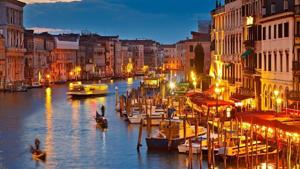Sustainable Tourism Is on the Rise in Italy
4 min read
Travelers’ interest in sustainable tourism, aka ecotourism, in Italy continues to gain momentum. According to a survey published by Statista, awareness of sustainable tourism by Italians has increased significantly over the past 10 years. Some 85% of respondents were aware of the concept of sustainable tourism in 2021.
Sustainable tourism means having a positive impact on the environment, economy, and society while supporting local culture and traditions.
“Slow tourism travels fast,” says Italy’s Ministry of Tourism. “Promoting it means taking care of the present and, above all, the future of the sector. This segment is not merely a growing trend but has also become a strategic pillar of tourism development for Italy.”
In response to the growing interest in sustainable tourism, the Ministry of Tourism earmarked funding to support it. They set aside 19 million euros for walking trails, 42 million euros for sustainable tourism, and an additional 33 million euros for open-air tourism.
Italy Is One of the Most Visited Countries
According to the United Nations World Tourism Organization (UNWTO), Italy hosted more than 63 million international tourists in 2019, making it one of the most visited countries on the planet. Tourism accounts for about 13% of Italy’s GDP, a not insignificant chunk of the country’s national economy.
Walks of Italy reports Italy has 55 UNESCO World Heritage Sites, including Rome’s Colosseum and the entire Amalfi Coast. Tourist travel to these sites and other locations in Italy accounts for 5% of Italy’s greenhouse gas emissions, according to the European Environment Agency. This led to an exploration of more sustainable tourism options to protect the country’s historic sites and natural wonders for future generations.
How To Travel Italy the Eco-Friendly Way
From idyllic coastal towns to mountainous regions, Roman ruins, Venice canals, museums full of classic artwork, inviting vineyards, and regional cuisine at restaurants, Italy overwhelms tourists with an abundance of destination options. Some overambitious travelers try to experience everything in a limited amount of time, which significantly increases their carbon footprint as they jet all over the country in a frantic attempt to check another spot off their must-see list before they return home. Making a few adjustments can help tourists explore Italy in a more eco-friendly manner:
Use Public Transportation: Try to use trains, buses, and ferries instead of planes or rental cars to travel between areas of Italy. The company FS Treni Turistici Italiani proposed a range of rail services specifically designed and calibrated for quality, with sustainable tourism that is attentive to rediscovering the riches of the Italian territory.Eat Local Cuisine: Traveling to Italy and grabbing lunch at McDonald’s or Subway will not support sustainable tourism. Talk to an experienced local guide who will help you avoid tourist traps and point you to local trattorias that offer a more authentic culinary experience.Support Local Businesses: Shop at local markets and sign up for community-based tours to support the local economy and the livelihood of permanent residents.Choose Eco-Friendly Lodging: Seek out hotels that practice local sourcing and energy efficiency. The Italian Touring Club awards an Ospitalità Italiana certification to hotels that meet or exceed strict sustainability criteria regarding waste management, energy efficiency, and the use of regional products. Guests can also help by reusing hotel towels, separating recyclables from trash in their rooms, and not printing hard copies of itineraries and directions.Slow Your Roll: Try to embrace slow tourism and take your time to explore the region of choice. Think about meaningful Italian experiences in terms of quality, not quantity.
“During my recent trip to Italy, I was determined to explore popular tourist spots more sustainably,” says Bella Bucchiotti, travel blogger at xoxoBella.
“Opting for cycling along the Amalfi Coast and using public transportation in Tuscany not only lessened my environmental impact but also led to unexpected discoveries off the beaten path. Additionally, choosing farm stays in the countryside and supporting local organic markets allowed me to connect with the authentic essence of Italy that I might have missed otherwise.”
Green Initiatives Promoting Sustainable Italian Tourism
According to Walks of Italy, there are a number of green initiatives with the goal of promoting sustainable tourism and preserving Italy’s national heritage.
Italy Green Travel: This initiative encourages visitors to literally take the road less traveled in Italy and explore tucked-away corners of the country. Observe wildlife and Italy’s natural beauty from a bicycle ride or via hiking.Sustainable Wine Tourism: There are wineries in Italian cities such as Rome, Venice, and Florence that have adopted sustainable practices such as water conservation and energy efficiency. Visitors can take tours of these wineries and learn about their green initiatives while drinking the fruits of their labor.Slow Food Movement: Carlo Petrini started the nonprofit Slow Food organization in 1989 to promote regional culinary traditions and quality foods. According to Slow Living LDN, Slow Food promotes “a world in which all people can access and enjoy food that is good for them, good for those who grow it, and good for the planet.” The grassroots organization acknowledges the “strong connections between plate, planet, people, politics, and culture.” Visitors can seek out Slow Food-approved restaurants.



